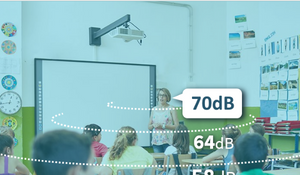Why Classroom Acoustics Matter
We may not realize it, but the acoustics of a classroom can affect many aspects of the teaching and learning experience. This includes some obvious attributes like the way students and teachers hear, and also some less obvious ones like stress levels and behavior issues.
So, what sort of problems might arise from poor classroom acoustics? Children suffer more from poor acoustics than adults do, since their auditory brain is not fully developed until they’re 15. According to the American Speech-Language-Hearing Association, classroom noise issues affect how a child:
• Pays attention;
• Reads and spells;
• Concentrates; and
• Succeeds in school.
A few years ago, one school tested to see just how big an impact auditory distraction had on their students. About 88% of the classes had one or more pupil report difficulties concentrating due to noise. While about one student in each class may not seem like a lot, no child should have to suffer due to poor acoustics in their learning environment.
Remedying these distractions can be a daunting task for schools, but teachers can implement a few quick fixes for what they can control. One example is using the flipped classroom on a day where there may be construction or too many noises for a student to concentrate. Teachers can also help students hear what they need to with an audio system that amplifies their voice. If a learning environment includes classroom acoustics that allow everyone to clearly hear and understand instruction, students are more likely to be engaged and successful.
